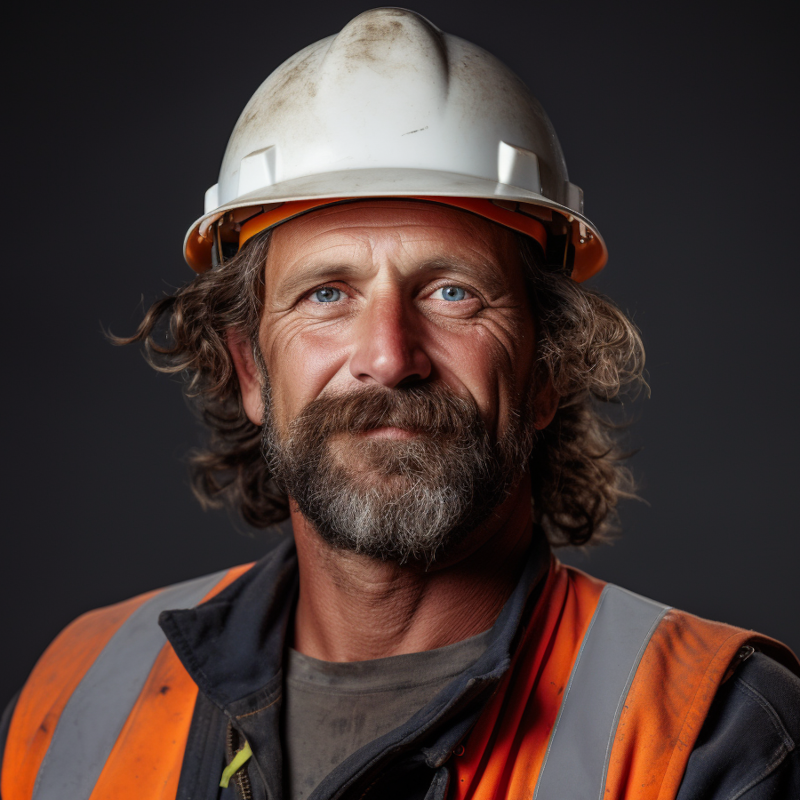


In the labyrinth of home improvement, electrical works stand as both the backbone of modern living and a realm where safety should be paramount. From wiring a new room to troubleshooting electrical issues, understanding the essentials of electrical work is crucial for every homeowner. Let's embark on a journey through the currents of knowledge, exploring useful tips to navigate the intricacies of electrical installations and maintenance while keeping safety at the forefront.
Knowledge is Power: Understanding Electrical Basics
Before delving into any electrical work, it's essential to grasp the fundamentals. Know the difference between voltage and current, understand circuits, and familiarize yourself with the functions of switches, outlets, and circuit breakers. A solid foundation in electrical basics lays the groundwork for safe and effective electrical projects.
Safety First: The Golden Rule of Electrical Works
Electrical safety is not a suggestion; it's a golden rule. Always turn off the power at the circuit breaker or fuse box before starting any electrical work. Invest in a non-contact voltage tester to ensure that circuits are truly de-energized. Wearing personal protective equipment, such as insulated gloves and safety glasses, adds an extra layer of defense against potential electrical hazards.
Mapping the Blueprint: Planning Electrical Installations
For any electrical project, meticulous planning is key. Create a detailed blueprint that outlines the placement of outlets, switches, and lighting fixtures. Consider the electrical demands of each room, ensuring that the wiring can accommodate the appliances and devices you plan to use. A well-thought-out plan not only enhances functionality but also minimizes the risk of future electrical issues.
Quality Matters: Choosing the Right Electrical Components
When it comes to electrical work, the quality of components can make a significant difference in safety and performance. Invest in high-quality wiring, switches, outlets, and circuit breakers. Opt for products with reputable certifications to ensure they meet safety standards. Cutting corners on materials may lead to issues down the line, so prioritize quality over cost.
The Art of Wiring: Best Practices for Neat and Safe Installations
Neat and organized wiring is not just about aesthetics; it's a safety consideration. Keep wires organized and secured to prevent tripping hazards and reduce the risk of damage. Use cable staples or clips to secure wiring along the framing, and avoid running wires under carpets or rugs where they may go unnoticed and unprotected.
Amping Up Knowledge: Understanding Electrical Capacity
Each circuit in your home has a specific amperage capacity. It's crucial to understand and adhere to these limits to prevent overloading circuits, which can lead to electrical fires. Know the amperage rating of your circuit breakers and ensure that the total load on a circuit does not exceed its capacity. Consider consulting with an electrician for larger projects to ensure compliance with electrical codes.
Troubleshooting Tips: Addressing Common Electrical Issues
Being equipped with basic troubleshooting skills can save you time and money. If you encounter issues such as tripped circuit breakers, flickering lights, or outlets not working, start by identifying the root cause. Check for loose connections, inspect wiring for damage, and test outlets with a multimeter. If the issue persists or if you're unsure, it's always wise to consult with a qualified electrician.
Future-Proofing with Smart Solutions: Embracing Home Automation
As technology advances, so do possibilities for electrical work. Consider incorporating smart solutions into your home, such as smart switches, outlets, and thermostats. Smart home automation not only adds convenience but can also contribute to energy efficiency. Just ensure that any smart devices or systems are compatible with your electrical infrastructure.
There have been several significant innovations and developments in electrical works in the building sector. Here are a few examples:
Smart Homes: With the advent of the Internet of Things (IoT), smart homes are becoming increasingly popular. Smart home technology allows for the integration of various electrical systems, such as lighting, heating, and security, into a single, easy-to-use interface that can be controlled via a smartphone or tablet.
LED Lighting: LED lighting is a highly energy-efficient lighting technology that has become increasingly popular in recent years. LED lights use less energy and last longer than traditional incandescent bulbs, making them an eco-friendly and cost-effective option.
Solar Power: Solar power has become an increasingly popular option for powering homes and buildings. Advances in solar panel technology have made them more efficient and affordable, making solar power a viable option for many homeowners and businesses.
Energy Management Systems: Energy management systems are designed to monitor and control energy usage within a building. These systems can help to reduce energy consumption and costs by automatically adjusting lighting, heating, and cooling systems based on occupancy and usage patterns.
Wireless Charging: Wireless charging technology is becoming increasingly popular for charging smartphones, tablets, and other devices. This technology can be integrated into furniture, countertops, and other surfaces, providing a convenient and unobtrusive way to charge devices.
There are many exciting innovations and developments in electrical works in the building sector. These innovations can help to increase energy efficiency, reduce costs, and improve the overall functionality and convenience of buildings.
There are several types of electrical works involved in building construction, including:
Electrical design: This involves planning and designing the electrical systems for the building, including the placement and capacity of outlets, switches, and other electrical components.
Wiring and installation: This involves the actual installation of the electrical wiring throughout the building, including wiring for lighting, outlets, and other electrical systems.
Electrical panel installation: This involves the installation of the main electrical panel, which controls the distribution of electricity throughout the building.
Lighting installation: This involves the installation of various types of lighting fixtures throughout the building, including recessed lighting, chandeliers, and sconces.
Electrical repairs and maintenance: This involves the regular maintenance and repair of electrical systems in the building to ensure they are functioning properly and safely.
Electrical upgrades: This involves upgrading the electrical systems in the building to meet new code requirements or to accommodate increased electrical demands.
Safety inspections: This involves inspecting the electrical systems in the building to ensure they are up to code and functioning safely.
The specific tasks and projects can vary depending on the needs of the building and the expertise of the electrical contractor.
When hiring an electrician, there are several factors to consider to ensure you choose the best one for your needs. Here are some tips to help you hire the best electrician:
Check for credentials: Ensure that the electrician you are considering is licensed, insured, and bonded. This will protect you from any liability in case of an accident or damage to your property.
Experience and expertise: Look for an electrician who has experience working on similar projects and has expertise in the specific area you require, such as residential or commercial electrical work.
Reputation: Research the electrician's reputation by reading reviews from previous customers and checking their ratings on websites such as the Better Business Bureau.
Price: While it's important to consider the price, don't choose an electrician solely based on the lowest quote. Look for an electrician who offers competitive pricing while also providing quality workmanship and excellent customer service.
Communication skills: Look for an electrician who is responsive, communicates clearly and answers your questions in a way that you can understand.
Warranty and guarantee: Choose an electrician who offers a warranty or guarantee on their work to give you peace of mind that any issues will be resolved promptly and efficiently.
The specific licenses required for an electrician may vary depending on the country, state, or province. However, in general, electricians are required to hold a license or certification that demonstrates their competency in the field. Here are some examples of the types of licenses or certifications that electricians may be required to hold:
Journeyman Electrician License: This license is typically required after completing an apprenticeship program and passing a qualifying exam. It allows an electrician to work independently on most electrical projects.
Master Electrician License: This license is typically earned after working as a journeyman electrician for a certain number of years and passing an additional exam. It allows an electrician to supervise other electricians and take on more complex electrical projects.
Electrical Contractor License: This license allows an electrician to operate their own electrical contracting business and hire other electricians to work for them.
Specialty Electrical Licenses: Some electricians may also need to hold additional licenses or certifications for specialized electrical work, such as low voltage systems, solar panel installations, or elevator electrical systems.
It's important to check the specific licensing requirements in your area to ensure that the electrician you hire has the necessary credentials to perform the work safely and effectively.
The voltage in sockets can vary between countries. Here are some examples:
• In the United States and Canada, the voltage in a standard household outlet is 120 volts.
• In most of Europe, including the United Kingdom, the voltage in a standard household outlet is 220-240 volts.
• In Japan, the voltage in a standard household outlet is 100 volts.
• In Australia, the voltage in a standard household outlet is 230 volts.
It's important to note that the frequency of the electrical supply can also vary between countries, with 50 Hz being the standard in most countries, but 60 Hz is used in some countries like the United States and Canada.
The voltage in sockets can vary by country. Here are some examples:
• United States and Canada: 120 volts
• Mexico and most of Central and South America: 120 volts and 240 volts
• Europe and most of Asia: 220 volts to 240 volts
• United Kingdom: 230 volts
• Australia and New Zealand: 230 volts
• Africa: 220 volts to 240 volts
It's important to note that these are general guidelines and there may be variations within countries or regions. It's always a good idea to check the voltage and electrical standards of a specific country before traveling or using electrical devices.
Electrical works, while requiring a level of technical knowledge, are manageable with the right approach. Whether you're tackling a DIY project or seeking professional assistance, prioritize safety, adhere to best practices, and stay informed about the electrical systems in your home. With the right knowledge and precautions, you can master the currents of electrical works and ensure a safe and efficient power supply for your living spaces.
Yours truly,
We use cookies
We use cookies and other tracking technologies to improve your browsing experience on our website, to show you personalized content and targeted ads, to analyze our website traffic, and to understand where our visitors are coming from. Privacy Policy.